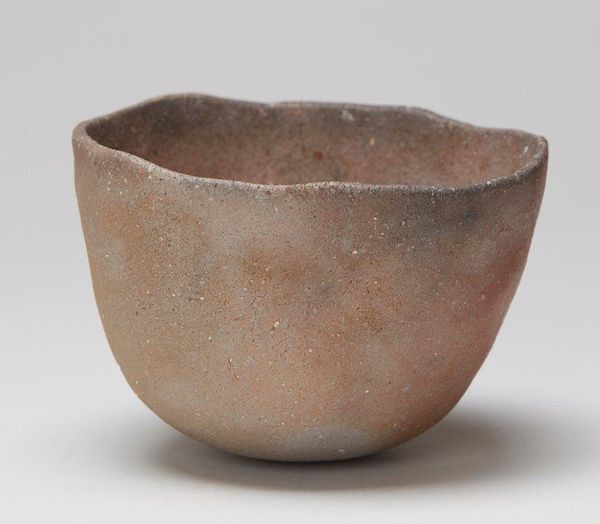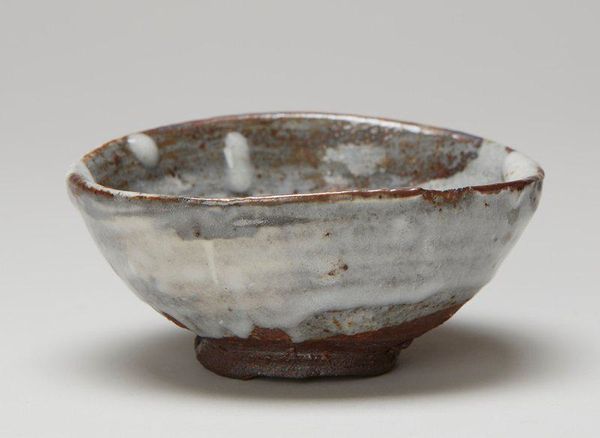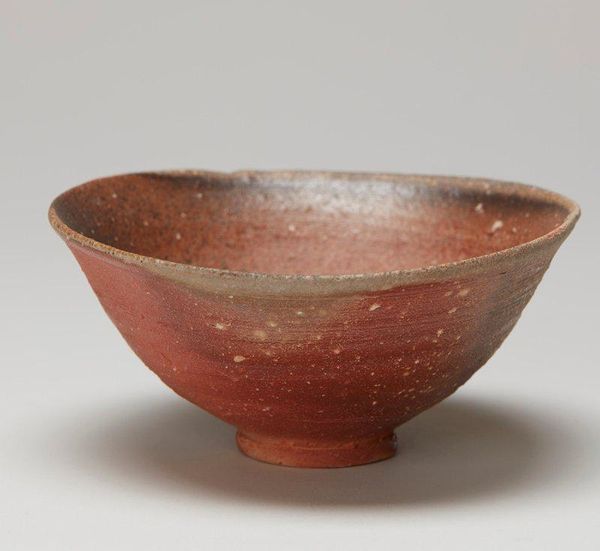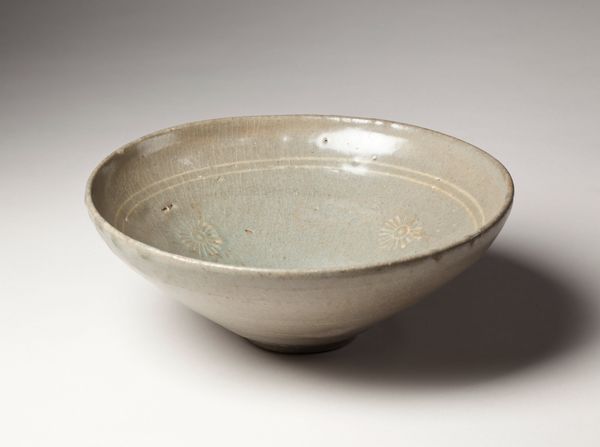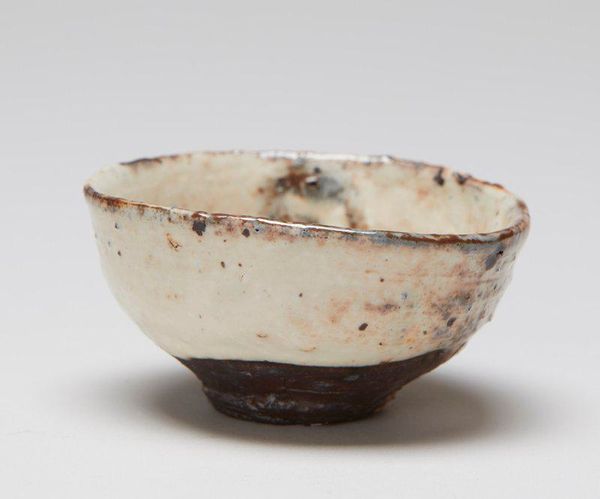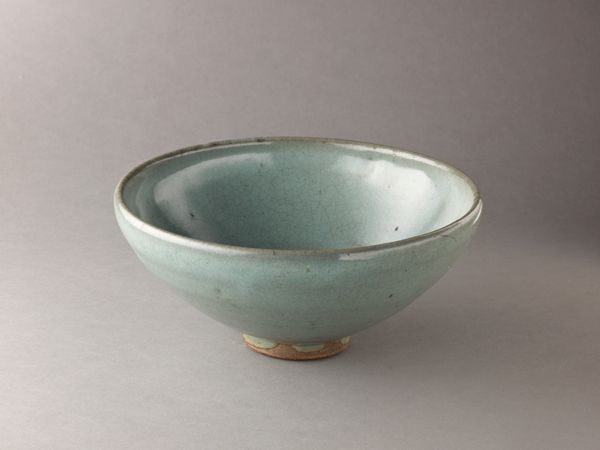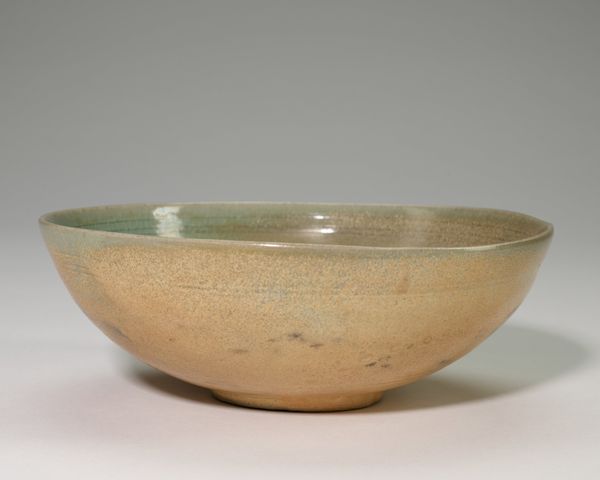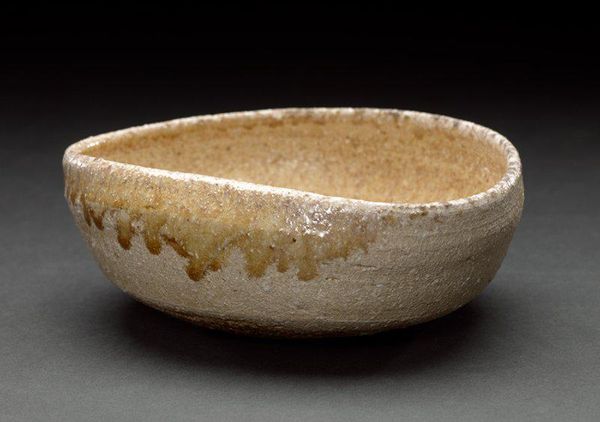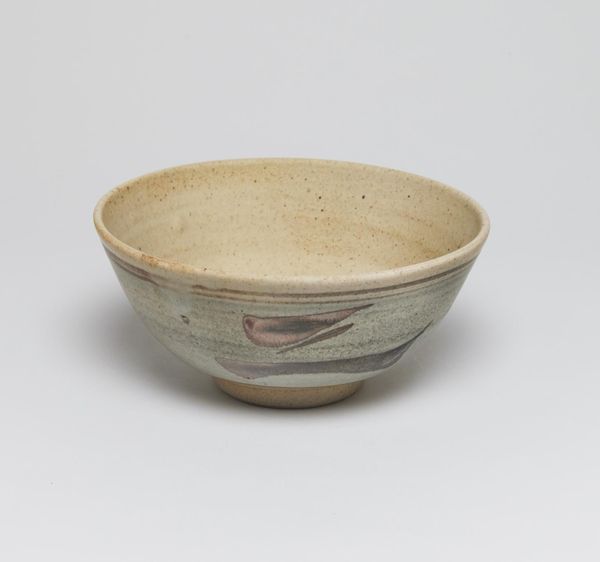
ceramic, earthenware
#
ceramic
#
abstract
#
earthenware
#
stoneware
Dimensions: 2 1/2 x 6 1/2 x 6 1/2 in. (6.35 x 16.51 x 16.51 cm)
Copyright: No Known Copyright
This tea bowl, or chawan, was created by Tsuji Kyō, a Japanese artist born in 1930. The simple ceramic form asks us to consider the profound social rituals and cultural traditions surrounding tea in Japan. Looking closely, you’ll see that the rough texture and earthy colors of the bowl relate to the aesthetic of wabi-sabi, which values simplicity, imperfection, and closeness to nature. These principles emerged from Zen Buddhism, emphasizing humility and the acceptance of transience. Tea ceremonies, formalized in the 16th century, became a way for people of different social classes to come together in a spirit of harmony and mutual respect. Art historians examine the subtle variations in form, glaze, and firing techniques to understand the regional styles and individual expressions of different potters. By studying the social history of tea culture, we can see how this humble object embodies core values of Japanese society.
Comments
No comments
Be the first to comment and join the conversation on the ultimate creative platform.



